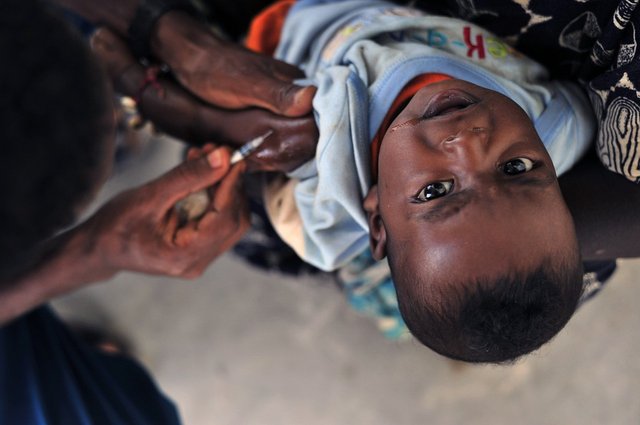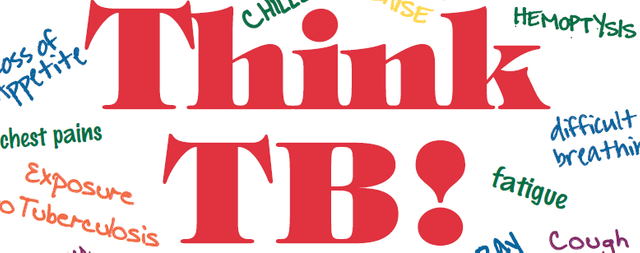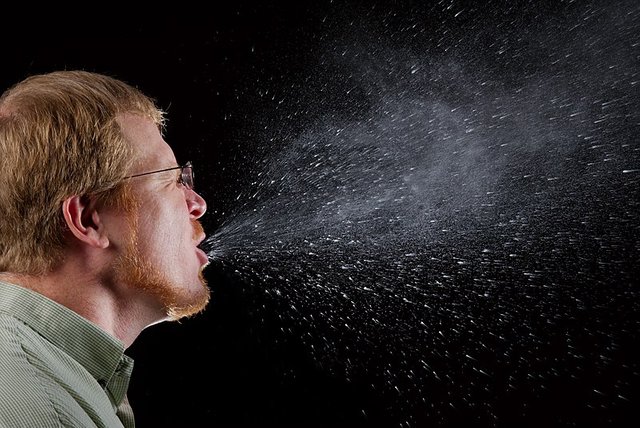The menace of Tuberculosis in Children: A wake-up call for action
Cough is not a strange condition in humans but when it is followed by other symptoms such as night sweat, vomiting, headache, weight loss, persistent fever, tiredness, chest pain, loss of appetite etc, then the first clinical suspected illness would be Tuberculosis. Tuberculosis (TB) is a chronic, infectious disease caused by bacteria generally reffered to as Mycobacterium tuberculosis. When a TB positive person who has not undergo any treatment coughs, spits, or sneezes; the tiny droplet nuclei containing the tubercule germ are released and therefore makes transmission possible.
_(14782046202).jpg)
Tuberculosis infected child BY Philadelphia, F. A. Picture Source Wikipedia CommonsCC BY SA 3.0
How it spreads?
Tuberculosis transmission BY James Gathany Picture Source Wikipedia CommonsCC BY SA 3.0
Tuberculosis is spread from person to person through air when an infected person coughs or sneezes. A person can contract bovine tuberculosis, another variety of TB, by consuming raw milk from infected cattle. TB spreads rapidly in areas where people are living in crowded conditions, have poor access to health care, and/or are malnourished. People of all ages can develop TB with highest risk in younger children and elderly people. People with TB infection who have weakened immume systems (for example, people with HIV/AIDS) are more likely to develop the diseases.
What are the symptoms and signs of TB?
The general symptoms are general weakness, weight loss, fever and night sweat. Other symptoms and signs depend on the part of the body that is affected. For example: in TB of the lungs (pulmonary tuberculosis): persistent cough, coughing up of blood and chest pain. In young children, however, the only sign of pulmonary TB may be stunted growth or failure to thrive. In TB of the bones and joints; swelling, pain with cripple effects on the hips, knees or spine.
What is the treatment for TB?
People with TB must complete a course of therapy called Directly Observed Treatment Schedule (DOTS), which usually includes taking two or more antituberculosis drugs for at least six months. People who fail to take the medication as prescribed or do not complete the course of therapy or are given ineffective treatment can develop multidrug resistant TB that is even more difficult to treat and more dangerous if spread to other people. A person with the disease will continue to infect others until after the first two weeks of commencement of treatment.

BCG vaccination [License: Public Domain]: Pixabay
What are the complications of TB?
Untreatment pulmonary TB results in disability and death. This may be more rapid in people infected with HIV/AIDS.
How is TB prevented?
Vaccination at birth or as soon as possible after with Bacilli Calmette-Guerin (BCG) vaccine pfotects infants against tuberculosis. Infants with known HIV positive mothers should be followed closely to monitor for any BCG-related complications.
BCG Vaccine
BCG vaccine protects infants against tuberculosis. The letters, B, C and G stand for Bacillus of Calmette and Guerin. Calmette and Guerin are the names of the people who developed the vaccine. It must be reconstituted with a diluent before use. BCG vaccine and diluent shojld be stored at a temperature between +2oC anc +8oC.
When and how is BCG vaccine administered?
BCG vaccine is given at birth or as soon as possible after birth. It should not be given to children who have clinical HIV/AIDS. Administered intradermally, 0.05 mls on the left upper arm. It is also worthy to note that BCG vaccine is not recommended after 12 months of age because the protection provided is less certain.
How safe is BCG vaccine and what are the potential adverse events following immunization?
BCG vaccine is safe. A mild reaction at the site of injection, a small raised lump, which heals after two weeks leaving a small scar about 5 mm across, - the scar is a sign that the child bas been effectively immunized and should come up after 6 weeks. If no scar occurs, send the child for mantoux test and repeat BCG if mantoux is negative. Serious events likely to occur include generalized infection primarily in HIV-infected persons or those with severe immune deficiencies, other events include swelling and abscesses, swollen glands (in the armpit or near the elbow)
.jpeg)
Tuberculosis transmission BY CDC Picture Source: Wikipedia CommonsCC BY SA 3.0
However, children who are not immunized against TB are likely to be infected from a TB positive patient because of their low immunity. Nevertheless, the symptoms is a little different from that of adultss. Tuberculosis should be suspected in children (0-14 years) with any or combination of symptoms such as low grade fever (which persists even when treated), night sweats, loss of weight, loss of appetite, failure to thrive, lymph node swellings, joint or bone swellings, angle deformity of the spine, restlessness, neck stiffness, headache and vomiting. Since coughing is not a likely symptons for children so as to collect their sputum sample for diagnosis, and since cases are often negative on culture, the diagnosis is always based on clinical findings, amily history of contact with a smear positive case, x-ray examination, and tuberculine test.
Tuberculosis is curable in children provided that the child case is detected early and treated promptly. An effective treatment is achieved through a Directly Observed Treatment which means that the patient the child is given the drug under the supervision of a health worker or family member. The treatment regimen are rifampicin, isoniazid, ethambutol, pyraxinamide, streptomycin. These drugs are presented as loosed or fixed-dose combinations. Children's drug regimen is used depending on the weight of the child. For the intensive phase, with the combination of rifampicin, isoniazid and pyrazinamide regimen; a 21-29 kg child will use 4 tablets, 11-20 kg will use 3 tablets, 5-10 kg will use 2kg and less than 5 kg will use 1 kg. Similar regimen will be used during the continuation phase but with only yhe combinations of rifampicin and isoniazid.
Conclusion
Children with severe forms of tuberculosis such as TB meningitis, Disseminated TB, TB spine, TB pericarditis etc should have streptomycin added during intensive phase. However, monitoring progress of tuberculosis children while on treatment is an essential part of the case management. This is to ascertain the effectiveness of treatments in killing M. Tuberculosis as well as assesing improvement in the child's clinical state.

All Images Used In This Article, Are Linked To The Respective Owners
Thank you for reading
References
Medicinenet:Tuberculosis facts
Medlineplus:Tuberculosis and immunization
If you write STEM (Science, Technology, Engineering, and Mathematics) related posts, consider joining #steemSTEM on discord here. If you are from Nigeria, you may want to include the #stemng tag in your post. You can visit this blog by @stemng for more details. You can also check this blog post by @steemstem here and this guidelines here for help on how to be a member of @steemstem. Please also check this blog post from @steemstem on proper use of images devoid of copyright issues here



Congratulations! This post has been upvoted from the communal account, @minnowsupport, by oluwambe from the Minnow Support Project. It's a witness project run by aggroed, ausbitbank, teamsteem, theprophet0, someguy123, neoxian, followbtcnews, and netuoso. The goal is to help Steemit grow by supporting Minnows. Please find us at the Peace, Abundance, and Liberty Network (PALnet) Discord Channel. It's a completely public and open space to all members of the Steemit community who voluntarily choose to be there.
If you would like to delegate to the Minnow Support Project you can do so by clicking on the following links: 50SP, 100SP, 250SP, 500SP, 1000SP, 5000SP.
Be sure to leave at least 50SP undelegated on your account.
Hello! I find your post valuable for the wafrica community! Thanks for the great post! @wafrica is now following you! ALWAYs follow @wafrica and use the wafrica tag!